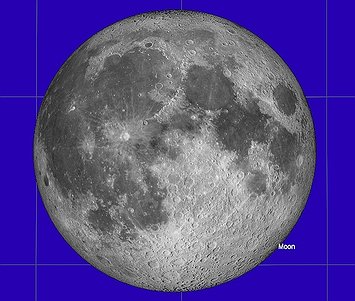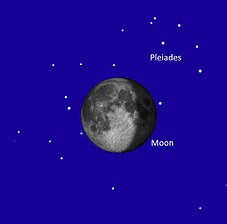Best night sky events for September 2024
September is the month when the cosmos puts on its celestial mega show with the moon occupying center stage! While August dazzled us with meteor showers and planetary alignments, September also has quite a lineup: a lunar eclipse, a supermoon, a Saturn occultation and many other notable events that are worth setting your stargazing calendar for. Let's begin!
Sept. 2 — New Moon
The new moon occurs at 6:56 p.m. The days surrounding the new moon are excellent times for stargazing! The moon is not in the night sky because the moon is now between the Earth and the sun. So, tonight is a great opportunity to take out your binoculars or telescope and view the starry moonless sky above you.
Sept. 4 — Mercury, Greatest Western Elongation
Mercury at 5:10 a.m. is now easily visible an hour before sunrise. This apparition is favorable for mid-northern observers because the ecliptic is nearly perpendicular to the horizon, so Mercury can be a little closer to the sun and still be visible in the twilight sky. Mercury now rises about 90 minutes before the sun and attains an altitude of 8 degrees by mid-twilight.
Sept. 5 — Crescent Moon and Venus
This evening, approximately 30 minutes after sunset, look west to see a waxing crescent moon and Venus (to the right, low on the horizon). You may spot Venus low on the western horizon after sunset over this whole month.
Sept. 8 — Saturn Directly Opposite Us from the Sun (opposition)
Saturn reaches opposition tonight and shines at magnitude +0.6 for most of the month. Tonight is a great night to break out your telescope to see Saturn’s reappearing rings. After being edge-on for nearly three months, the rings are now starting to show themselves again. Look for Saturn low in the east-southeast after sunset. By midnight, the bright planet will be fairly high in the southern sky.
Sept. 10 — First Quarter Moon
The first quarter moon occurs at 11:05 a.m. This phase marks the first quarter of travel of the moon in its orbit around the Earth. This is the halfway point between the new moon and the full moon. So the moon appears with the right half of the disk illuminated.
Sept. 16 — Saturn Closes In On the Moon
At nightfall, low in the east-southeast, take note of Saturn positioned about a half-dozen degrees to the left of the nearly full moon. During the overnight hours, the moon will slowly advance toward Saturn at a rate of roughly its own diameter per hour. By a little after 4 a.m. the following morning, the moon will cover (occult) Saturn.
Sept. 17 — A Predawn Moon Saturn Occultation, Later, a Full Harvest Supermoon Rises, and a Lunar Eclipse!
The moon definitely takes center stage during this 24-hour period. It starts with Saturn being covered (occulted) by the moon. This will start at 4:08 a.m. (ingress) and end at 5 a.m. (egress), lasting just 52 minutes. Saturn will appear far smaller than the moon simply because it is so much farther from us. Considering that the moon is about 30' (arcminutes) or 1800" (arcseconds) across, and Saturn is just under 20" (arcseconds) across, Saturn will appear about 90 times smaller than the moon. The moon at magnitude -12.2 will be over 100,000 times brighter than Saturn’s magnitude of +0.6, making Saturn difficult to see naked-eye due to the moon's glare. If you have a telescope or binoculars, this would be a great time to use either to watch this spectacular somewhat rare event.
Later, you won’t want to miss this particular full moon, which rises during a partial lunar eclipse. The darkest part of the eclipse will happen a mere 18 minutes after a 6:55 p.m. moonrise. So, by the time the moon clears your local horizon, the darkest part of the eclipse will be just beginning (7:13 p.m.). During this eclipse, a small portion of the moon will pass through Earth’s dark shadow (the umbral shadow), creating a subtle darkening on the lunar surface. Only 9% of the moon will be semi-dark. The eclipse peaks at 7:44 p.m. then the umbral portion ends at 8:15 p.m. After the Umbral portion, the Penumbral portion of the eclipse starts. The Penumbral Eclipse is very faint and most of the time imperceptible to the human eye. While this eclipse is occurring, the moon will achieve “full” status at 7:34 p.m.
This particular full moon which happens near the fall equinox is the Harvest Moon. It is called this because it provides extra light around sunset for several nights in a row, allowing farmers and gardeners to finish their harvests before the frosts of fall arrive. And lastly, this year, the Harvest Moon is even more special! It is a supermoon, which means that it will appear larger and brighter in the night sky because it happens when the moon is closest to us in its orbit.
Sept. 22 — The Moon Will Be Nestled Inside M45 the Pleiades Star Cluster Right Before the Fall Equinox
Very early on the 22nd, the moon will be surrounded by the stars of M45 (the Pleiades) starting at 2:15 a.m. and lasting until dawn twilight brightens the sky. This is a great event for binoculars or cameras with a 250mm or larger telephoto lens also, any size telescope will show a spectacular image for you to see. Then a few hours after dawn, the sun passes the equator heading south for the winter and so we arrive at the fall equinox at 5:44 a.m. This marks the first day of fall in the Northern Hemisphere and spring in the Southern Hemisphere.
Sept. 23 — The Moon and Jupiter Conjunction
Look east around 10:30 p.m. to see a waning gibbous moon less than 6° to the right of Jupiter.
Sept. 24 — Last Quarter Moon
The last quarter moon is the third and final quarter phase of the moon during its monthly cycle. At this time (2:50 p.m.), the moon appears half-illuminated, with the left half receiving sunlight. This moon is visible after midnight and throughout the morning.
Sept. 25 — The Moon and Mars Conjunction
Mars rises at 11:21 p.m. and is at its highest point in the sky just before dawn’s twilight. Look east (east-southeast) this morning at 3:30 a.m. and you’ll see red Mars about 5 degrees to the lower right of the moon.
• • •
John Taylor is an amateur astronomer who lives in Hayden.







